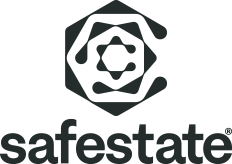Credential Breach Detection
Safestate’s monitoring of leaked user credentials monitors and alerts you as soon as your email address or an email address associated with your domain is found in a leak. As soon as something is found, a notification is sent directly to your inbox. There, you can see when the leak was found, where it was found, and whether a password is included in the leak or not. Below, you can see how the service works
The value in monitoring?
In today’s digital era, user data is like gold for cybercriminals. When user data leaks online, whether through data breaches at large companies or smaller incidents like theft of personal devices, it becomes fuel for attackers to carry out various types of harmful activities. When an attacker obtains leaked user credentials, they can use them in several ways to harm individuals and organizations.
A common method is “credential stuffing,” where the attacker uses the stolen credentials to try to log in to other platforms and services. Since many people reuse passwords across different websites and apps, the chance of a successful login increases. The attacker can then access personal information, carry out fraud, or spread malware.
By receiving prompt information about a potential leak, individuals and organizations can take action to minimize the damage. This may involve changing passwords on affected accounts or alerting an employee that their email address has been found on forums where phishers look for targets for their phishing attacks.
How does it work?
Our monitoring service is integrated into Safestate, where we continuously and actively search for new leaks containing compromised user credentials, both automatically and manually, in:
- Dumped and leaked texts (pastebins)
- Protected forums on the Darknet and Clearweb.
- Tor and I2P networks
- P2P networks (dumped torrents)
- Web directories on Clearweb
- Databases for leaked data (MongoDB)
- Cloud sharing services (Mega/Cloud drive)
When the system detects a match, an alert is sent to you as the customer along with a report containing all available information about the leak and recommended actions.









